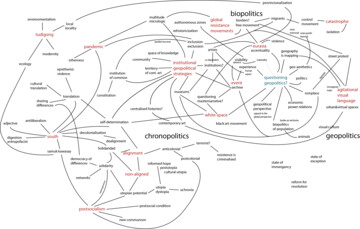Tudigong or God of the Land, it literally means Lord of the Soil and the Ground, is a tutelary deity of natural locality in Chinese folk religion. Tudigong has been worshipped since ancient times to modernity. With his shrine or altar usually occupying the most “strategic” (in terms of feng shui) location in a place, whether in a mountain, in a village, inside a house, Tudigong plays the role of guardian for the land’s natural environment, animals, and plants, as well as humans.[1]
A god of the lowest rank, Tudigong receives wishes from worshippers and grants them according to their deeds. Hence his more formal name, Fude Zhengshen, the Right God of Blessing and Virtue. In many places he is worshipped before the burial of the dead, for using his land to return their bodies to the earth. Given his close (intimate) relationship with humans, he is often called Grandfather (yeye), or Great Elder Lord (Dabogong).
Tudigong is portrayed as an elderly man with a long white beard, a black or gold hat and a red or yellow robe, which signifies his position as a bureaucrat. His superiors include the City God (Chenghuangshen) and the Jade Emperor, the Supreme God. As opposed to Gaia, the Earth God, Tudigong is ultimately localised, in the sense of taking care of the smallest site or larger locality like a village or a city, but never the whole Earth.
When people move, or “→ migrate”, to another village or city, they have to say goodbye to their original Tudigong and start to worship the new place’s local Tudigong.
In modern, capitalist society, our relationship with the immediate environment, where our physical and mental existence shares a locality with other humans and creatures, is mediated by a myriad of abstractions: food, clothes, mobile phones, roads, etc. Similar abstractions existed in the past, but now they operate and affect our lives at an unprecedentedly high speed and large scale.
People ask Tudigong for wealth. Today, however, the granted wealth (if any) becomes questionable, as money grows at the same speed as debt; or money is debt, resulting from the operations of the geo-economic politics of globalisation and the neo-liberal state. Thus, Tudigong as our spiritual mediator with the local environment has lost his power as a mediator.
The global environment since the 1970s has become a predominant geopolitical issue. Yet, in decision-makers’ books, the environment, or nature, has not only been stripped of its spiritual sense, but turned into resources, with increasingly precise and scientific calculations of the economic returns and its manageable contributions to human welfare – an anthropocentric, bureaucratic point of view based on so-called sustainable development.[2]
People’s practices of Tudigong worship are not immune from geopolitics, either. During China’s Cultural Revolution (1966–1976), most Tudigong shrines and temples, along with other deity worship facilities and practices, were destroyed or fell into disrepair. With the economic reforms and opening up of China since the late 1970s, many shrines and temples were rebuilt. Since the southern provinces have kept strong connections with overseas Chinese, including those in Malaysia, Singapore, Indonesia, Hong Kong and Taiwan, Tudigong worship has rapidly moved back into China via these links.
Taiwan’s democratic and economic reforms since the 1980s and 1990s, together with Chinese government’s “One China” policy, have made the relationship between Taiwan and the southern provinces much stronger than in the Cold War period. The revival of Tudigong temple on Xianyue Mountain in Xiamen City is a good example of instrumentalising cultural practices under the perimeters of geopolitics. The temple expanded with funds provided by Taiwanese businesses and the Chinese government, while the area around it became a huge park, and the temple itself has organised international festivals for Tudigong each year in Xiamen, Taiwan, and Malaysia since 2008, attracting large numbers of visitors and worshippers.[3]
Unlike many localised shrines for a tutelary deity, a large number of Tudigong temples in cities and towns in the region have become winners of our current international geopolitics.




